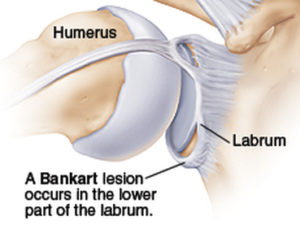Dr Gautam Tawari is an accredited orthopedic sports surgeon from The Royal College of Surgeon in the UK. He has a Diploma in Sports & Exercises Medicine (Dip.SEM) from the Royal college and is a Fellow of the Sports & Exercise Medicine Society of the UK.
He has worked as a Consultant Orthopaedic Shoulder Surgeon in the UK, Now Practicing as a Shoulder Sports Surgeon in Mumbai and specialises in advanced Shoulder joint arthroscopy & Sports related injuries to the Shoulder joint.
The common sports related injuries he routinely treats surgically include – Rotator cuff repairs, Bankart Repair and Shoulder Stabilisation surgery, SLAP repair and biceps related pain.
Shoulder instability is a problem that occurs when the structures that surround the shoulder joint do not work to maintain the ball within its socket.
Cause
Shoulder instability occurs when the head of the Humerus (arm bone) in forced out of the socket. This can happen as a result of a sudden injury or from overuse.
A severe injury cause the shoulder to become unstable by stretching or tearing the ligaments of the shoulder. When the ligaments of the shoulder are pulled away from the bone, this injury is called a “Bankart lesion.”

Presentation
Common symptoms of shoulder instability include:
- Pain caused by shoulder injury
- Repeated shoulder dislocations
- Repeated instances of the shoulder giving way.
- A persistent sensation of the shoulder feeling loose, slipping in and out of the joint.
- Athletes with instability will have a feeling that the shoulder wants to “come out of socket”.
Treatment
Physiotherapy with specific strengthening exercises helps to strength the shoulder and maintain the joint in proper position. This most likely helps patients with multi-directional instability.
Shoulder arthroscopy is necessary to stabalise the shoulder. Torn ligament can be repaired using anchors and loose capsule can also be tightened.
Recovery
After surgery, arm is kept in a sling to avoid use 3 weeks. Full healing takes 3 – 4 months. Physiotherapy is carried out in 3-4 phases from 3 weeks onwards upto 3 months.
Surgical repair provides pain relief, improvement in strength and function, and patient satisfaction, however surgeons expertise is more important in achieving satisfactory results.
